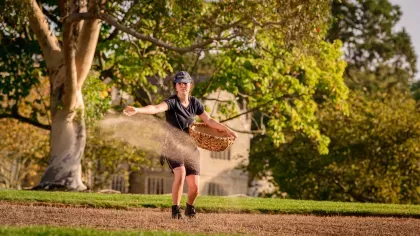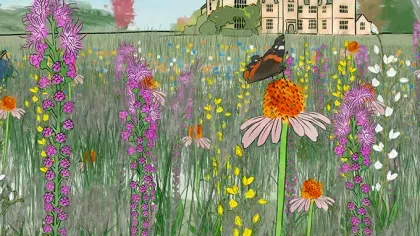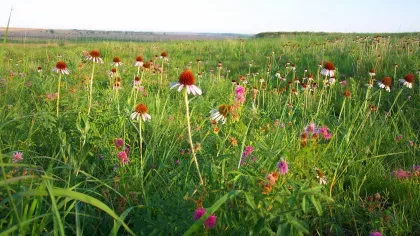22 March 2021
What is a prairie?
Discover more about one of the world’s most threatened ecosystems.

Our American Prairie at Wakehurst is gradually taking shape right before our eyes to become a stunning sea of grasses and wildflowers.
Covering six acres, our new landscape will evoke the herbaceous wild plant communities of North America.
Not only a beautiful and immersive visitor attraction, the prairie will also be a ‘living laboratory’ for our scientists to learn more about this critically endangered global habitat.
But what exactly is a prairie?
The North American prairie
Prairies are flat, temperate grasslands found in North America.
Like the British wildflower meadow, this landscape is predominantly made up of grasses, along with wildflowers.
Location is important when defining a prairie.
Similar temperate grasslands in South America are called Pampas, while in Africa they are described as velds, and in Asia are known as steppes.
The peak flowering season of the North American prairies is in late summer or early autumn.
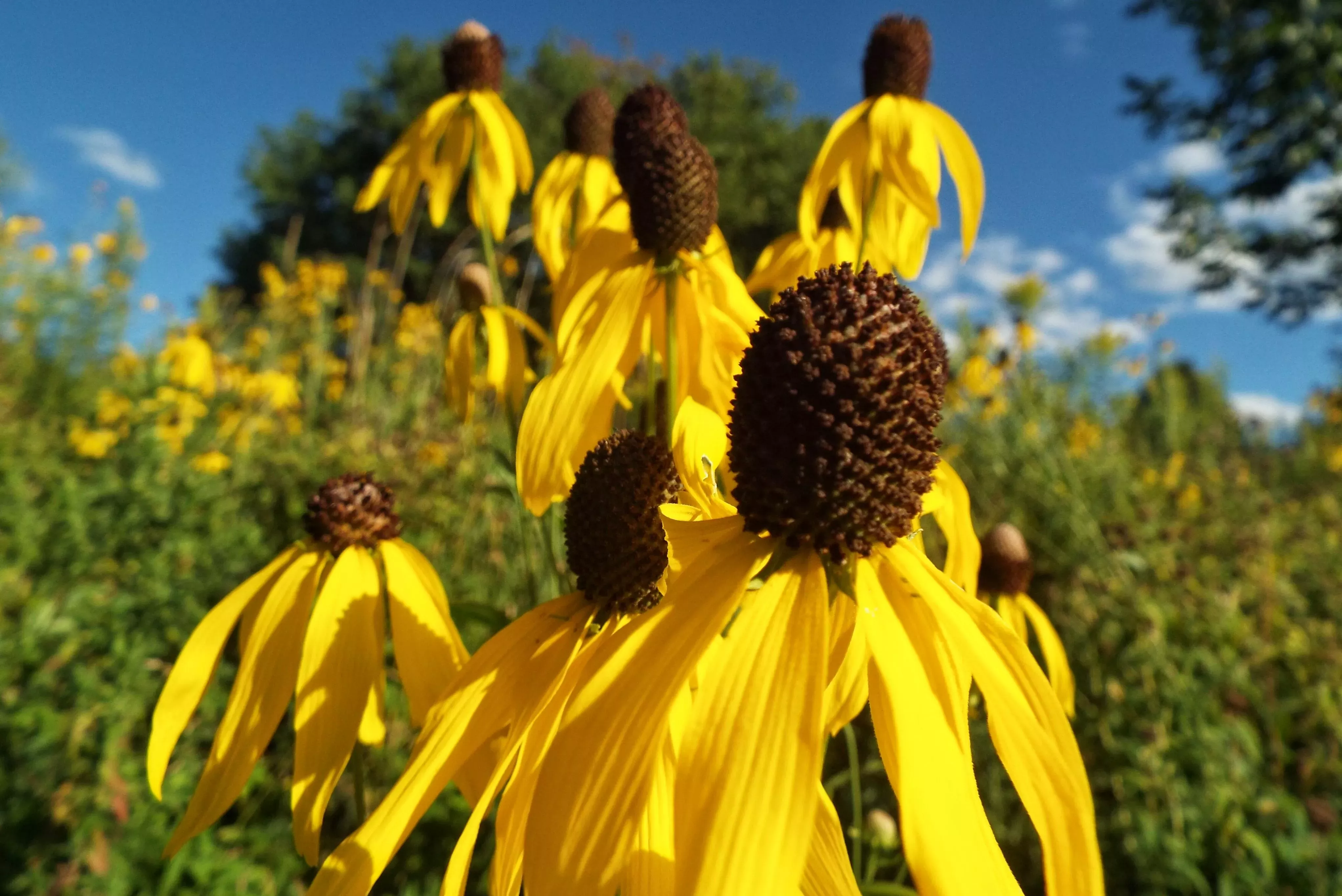
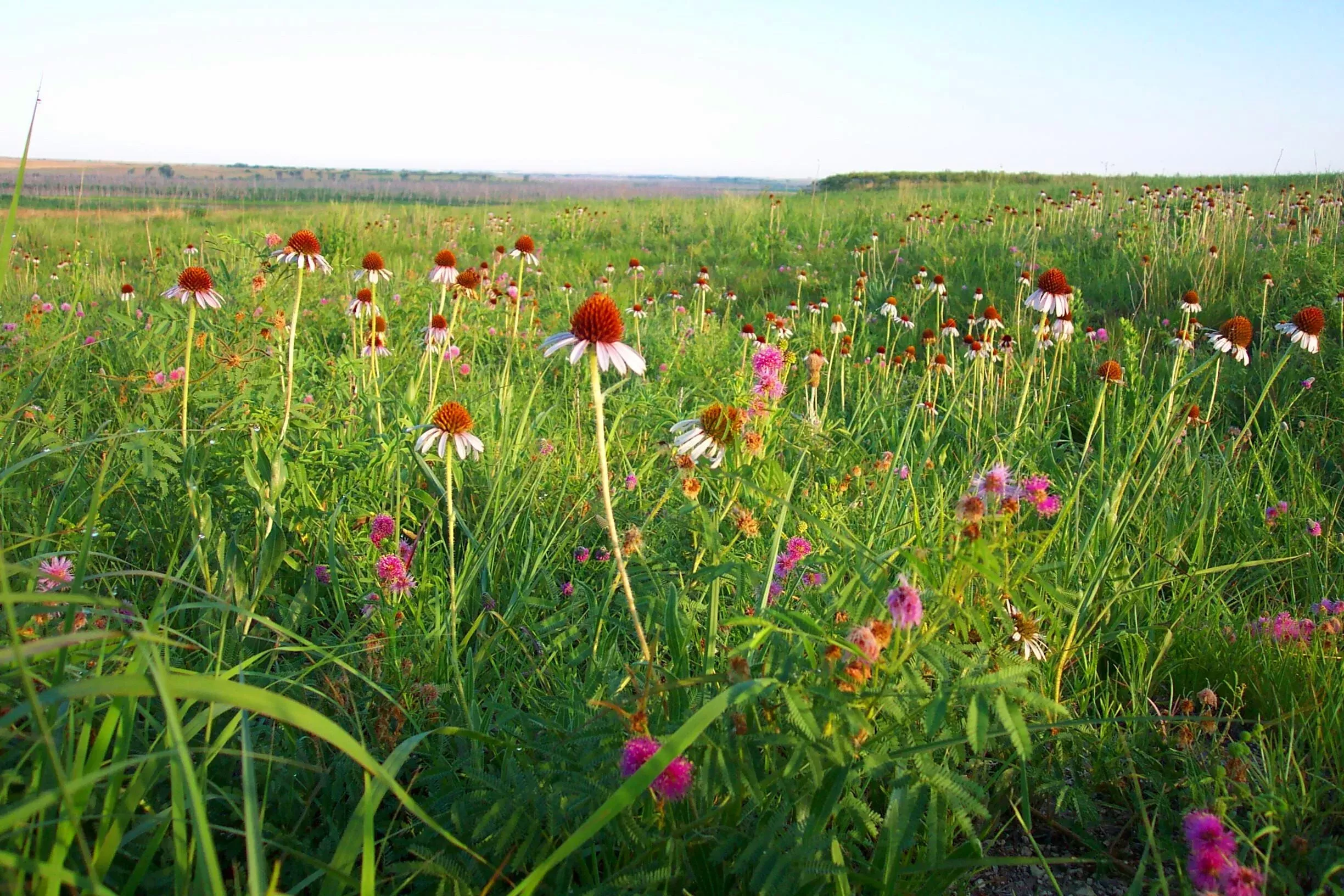
Rocky origin
It all started with plate tectonics.
Millions of years ago, the Rocky Mountains were forced upward, stopping large quantities of rainfall from falling in inner parts of North America.
This is where the prairies formed.
As they developed, they were maintained by the natural stresses of climate, grazing, and fire.
We will be recreating some of theses stresses in our prairie at Wakehurst.

3 prairie subtypes
Across North America, there are three main subtypes of prairie – the tallgrass, midgrass and shortgrass prairie.
The tallgrass prairie, as the name reveals, is abundant with tallgrasses such as big bluestem, prairie cordgrass and prairie dropseed. This subtype has rich soil and is located in the eastern, more humid area of the central North American plains.
Midgrass prairie is found in the central part of this region and covers the widest area. Bunchgrasses and sod-forming grasses grow here.
The most western and driest section of the plains is the shortgrass prairie. Here, you’ll see species of buffalo grass and grama grasses.
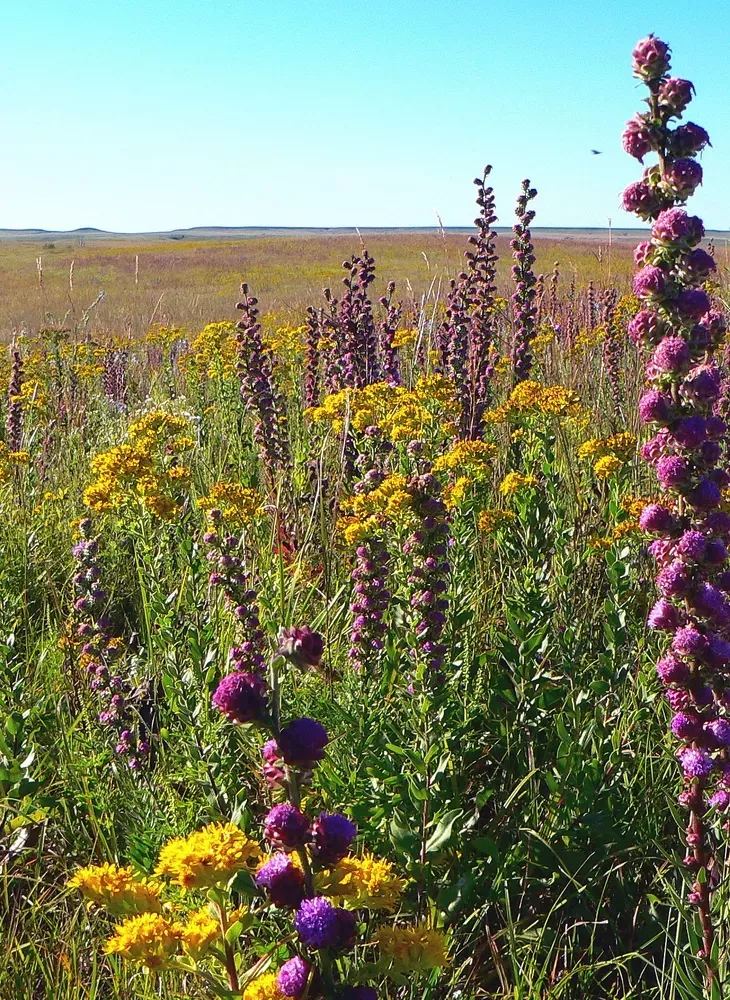
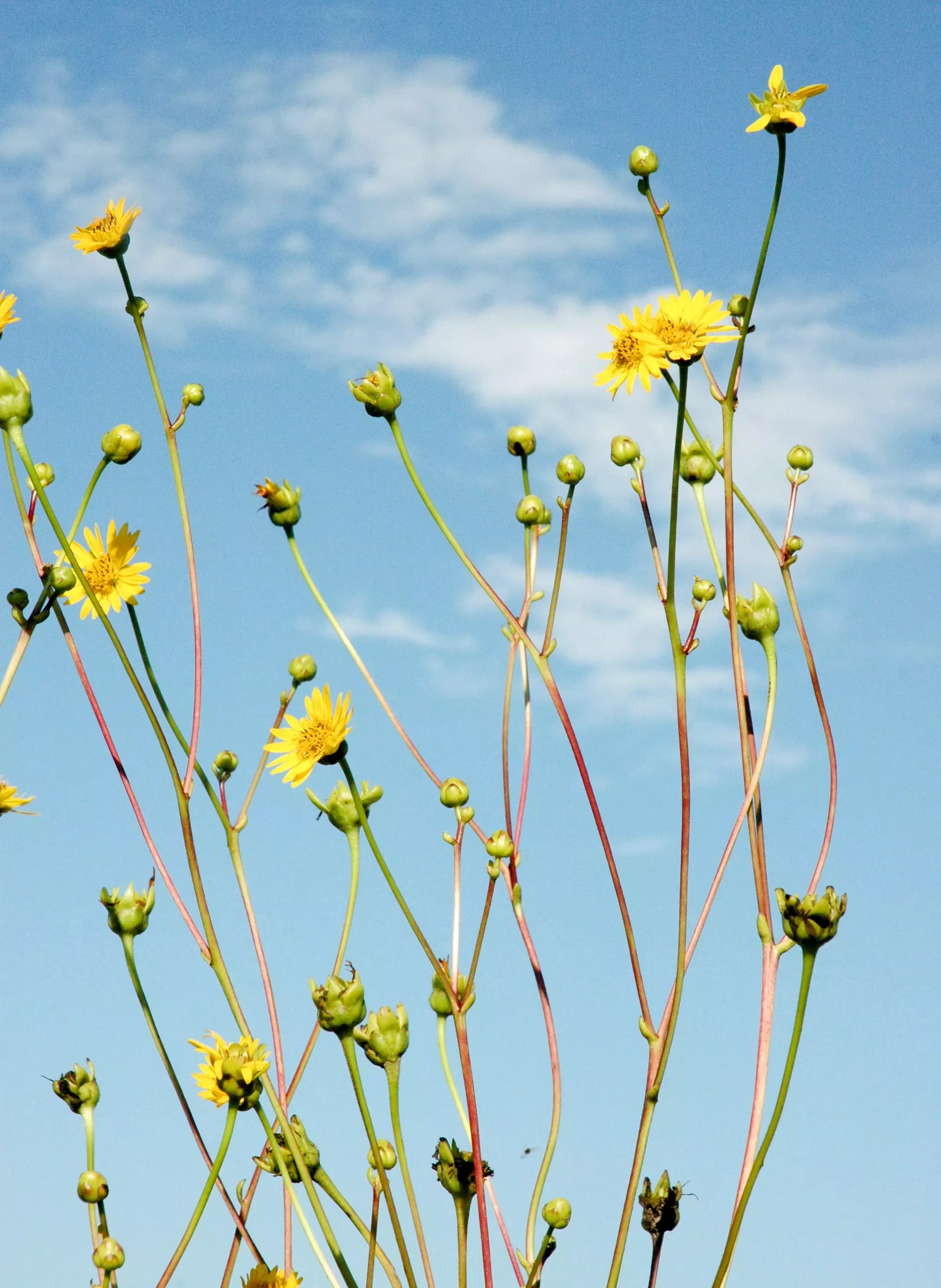
Plants in the prairie
Prairies are brimming with beautiful and fascinating plants. Here are some of the classic plants you'll find growing in prairies:
- Little bluestem (Schizachyrium scoparium)
- Rattlesnake master (Eryngium yuccifolium)
- Elegant gayfeather (Liatris elegans)
- Black-eyed Susan (Rudbeckia hirta)
- Showy aster (Eurybia spectabilis)
- Purple coneflower (Echinacea purpurea)
- Butterfly weed (Asclepias tuberosa)
- Wild lupine (Lupinus perennis)
Did you know? Two key prairie plants have been used by Indigenous communities in America to treat snakebite: rattlesnake master (Eryngium yuccifolium) and coneflower (Echinacea).

Why are prairies important?
Prairies are vital ecosystems.
Many native animal species depend on these habitats for survival, from birds and insects to reptiles and mammals.
This complex ecosystem also plays an important role in capturing and storing carbon.
The long roots of prairie grasses reach deep underground and structure and nourish the soil and prevent erosion. Some plants have roots that extend a whopping 12 to 15 feet down.
When some of these roots die and decompose, the large amounts of organic matter help create rich, fertile soil.
Did you know? Prairies can store more carbon than forests.
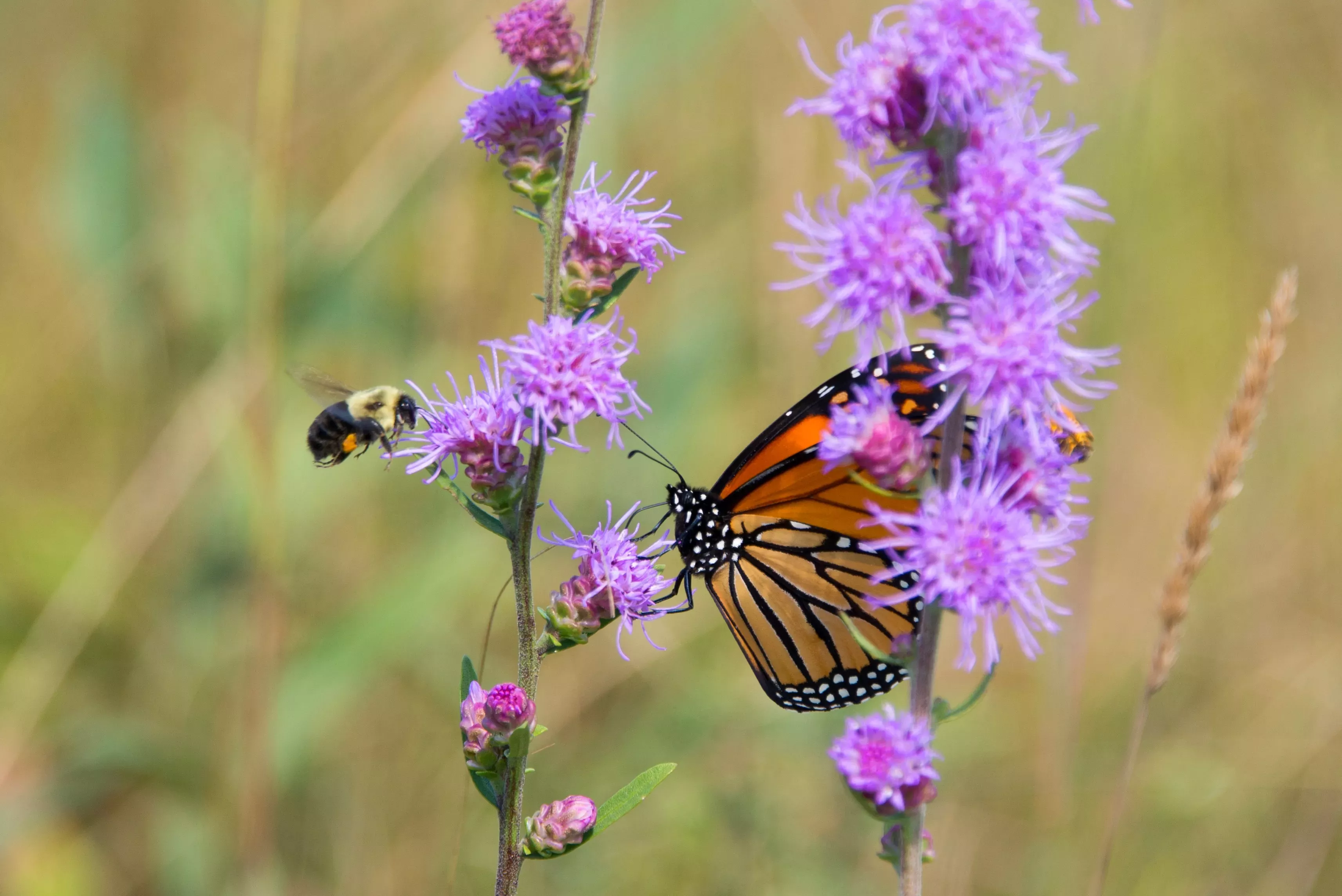
Habitat under threat
Prairies are important, but they are also severely under threat.
This ecosystem once covered vast areas of central North America. Now only 1% of tallgrass prairies exists, while under 25% remains of mid and shortgrass prairies.
This makes it one of the world’s most threatened ecosystems.
The threats these prairies face include invasive plant and animal species, industrial action, human disturbance, agriculture, urban development and the division of the land.
Fire and teeth
Though it sounds destructive, fire helps prairie plants thrive.
These perennial plants have protected root systems which mean they can grow back speedily. After the flames pass, the grasses and wildflowers bloom in abundance.
So how does fire help? It stops certain plants, such as trees, invading the prairie which would have a detrimental effect on the competing native prairie species.
Fire also burns away dead vegetation, clearing the way for new growth, and improves habitat for prairie wildlife.
Read more about how fire plays a role
Another helpful stress on the prairie ecosystem is grazing.
Bison roamed the prairies and grazed on new shoots after the fires. Dead material left in their wake was then fuel for the next fire.
This cycle of fire and grazing helps boost the diversity of the prairie and creates plant succession, meaning different plants can grow at different phases.

Our American Prairie
There is still more of a journey ahead towards the establishment of our own American Prairie.
Over the coming months and years, the landscape will be constantly evolving.
Every time you visit, look out for waves of growth, with different species taking centre stage at different times, making for a beautiful, wild spectacle.

